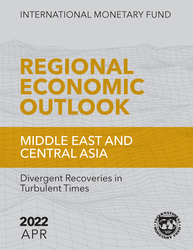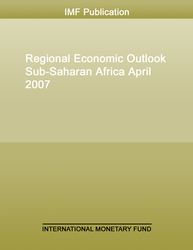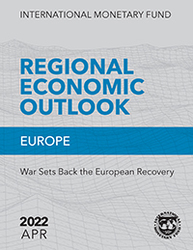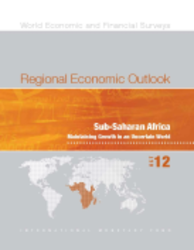
Regional Economic Outlook, April 2022, Middle East and Central Asia
Regional Economic Outlook, April 2022, Middle East and Central Asia
READ MORE...
Publication date: April 2022
ISBN: 9798400209093
$20.00
Add to Cart by clicking price of the language and format you'd like to purchase
Available Languages and Formats
| Arabic | |||
| English | |||
| French | |||
| Russian |
Prices in red indicate formats that are not yet available but are forthcoming.
Topics covered in this book
This title contains information about the following subjects.
Click on a subject if you would like to see other titles with the same subjects.
Exports and Imports , Finance , Inflation , Economics- Macroeconomics , International - Economics , inflation expectation , portfolio inflow , inflation dynamics , CCA country , country abbreviation , Inflation , Oil exports , Current account balance , Fiscal stance , Food prices , Global , Middle East and Central Asia , Central Asia and the Caucasus , Middle East , North Africa
Summary
The war in Ukraine and sanctions on Russia are exacerbating the divergence in recovery prospects for the Middle East and Central Asia (ME&CA). Despite better-than-expected upside momentum in 2021, the economic environment in 2022 is defined by extraordinary headwinds and uncertainties, particularly for commodity importers, with higher and more volatile commodity prices, rising inflationary pressures, faster-than-expected monetary policy normalization in advanced economies, and a lingering pandemic. Prospects for oil exporters in the Middle East and North Africa (MENA) region have improved, while countries in the Caucasus and Central Asia (CCA) region face a particularly challenging outlook given their linkages to Russia and Ukraine. Downside risks dominate the outlook and include a prolonged war and further sanctions on Russia, tighter-than-expected global financial conditions, possible deanchoring of inflation expectations, a sharper slowdown in China, and new pandemic outbreaks. Policymaking has become increasingly complex, with dwindling macro policy space to deal with these extraordinary shocks, amid high debt and inflation. Given divergent outlooks, policies will need to be calibrated carefully to country circumstances to manage uncertainties, maintain macroeconomic stability, and support the recovery while protecting the most vulnerable and ensuring food and energy security. Structural reforms have become even more urgent to prevent scarring from the pandemic and the war, and ensure a private sector-led and inclusive recovery, including by embracing digitalization and investing in a greener future.
Copyright © 2010 - 2025
Powered by:
AIDC



